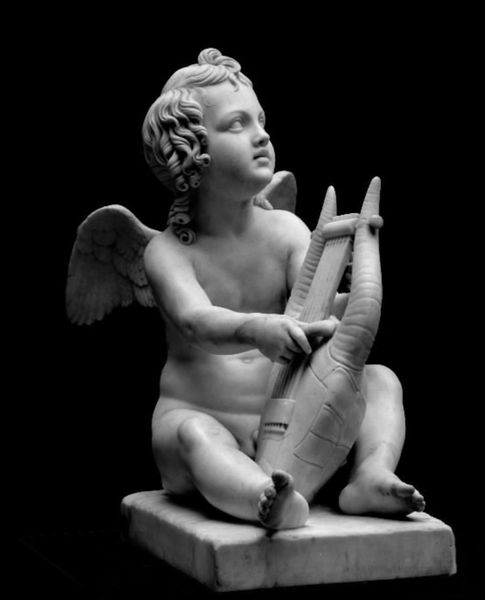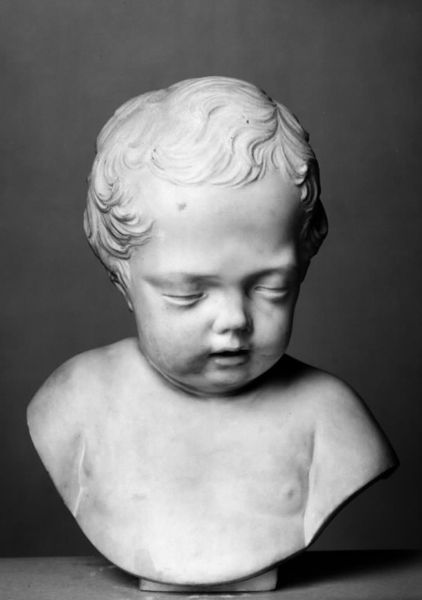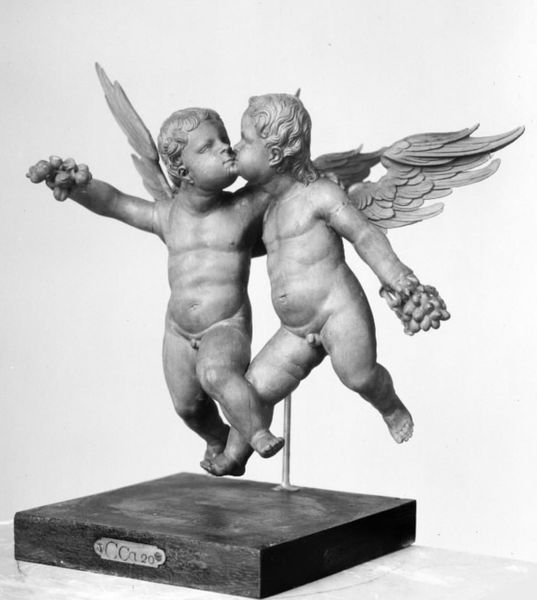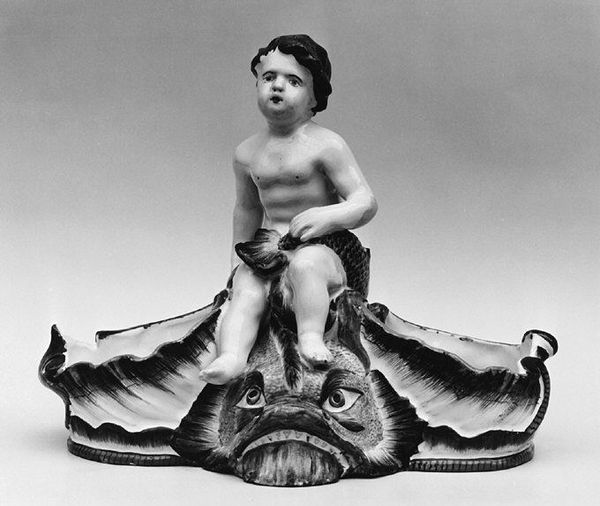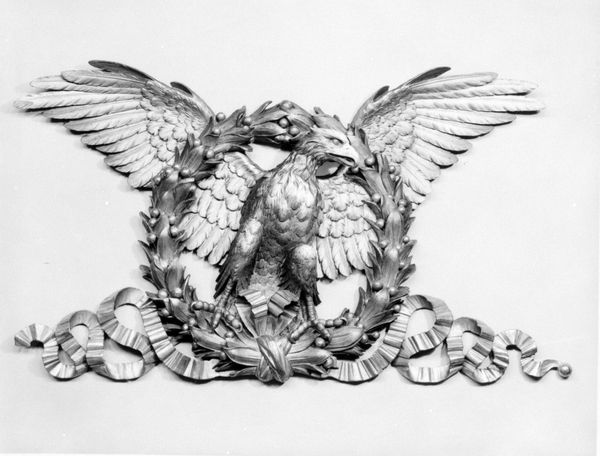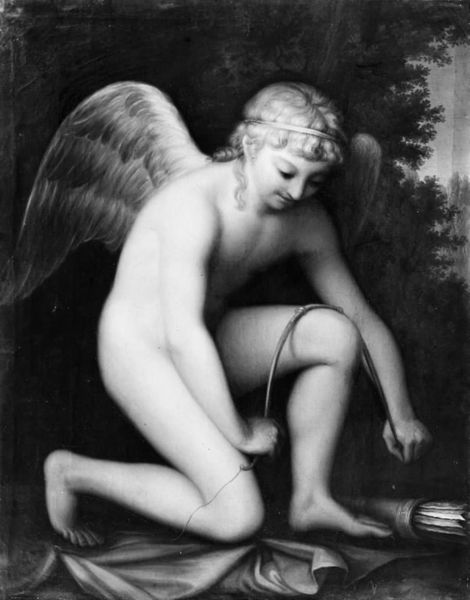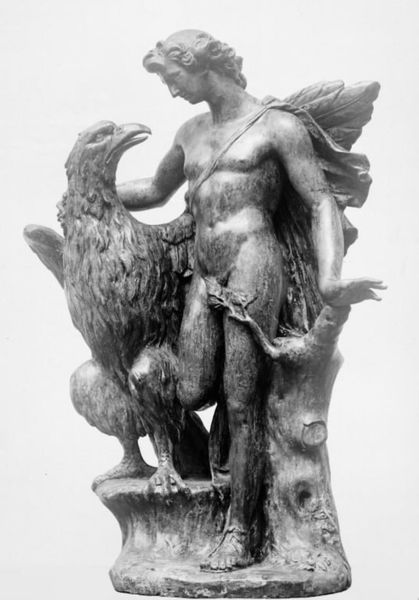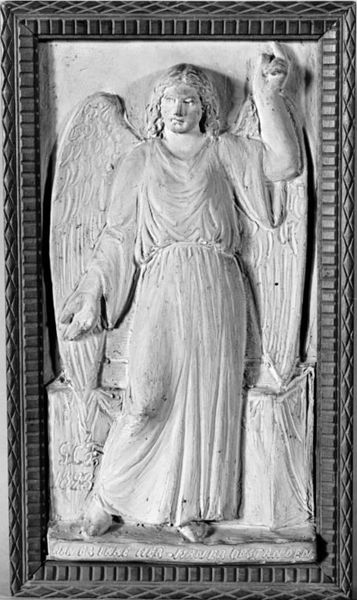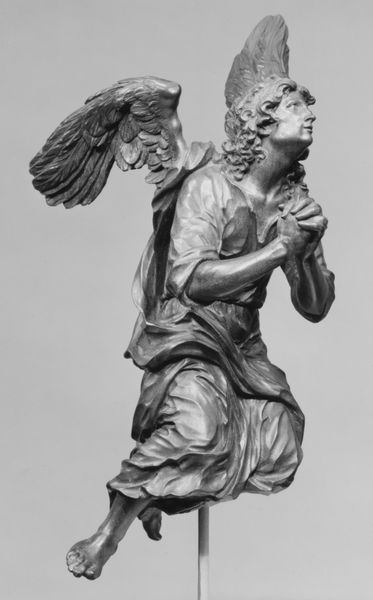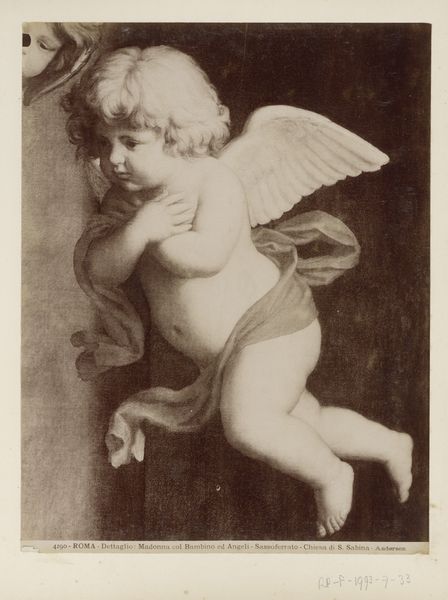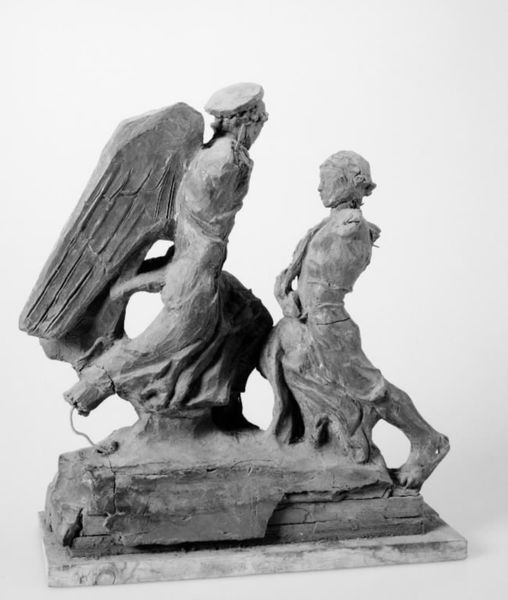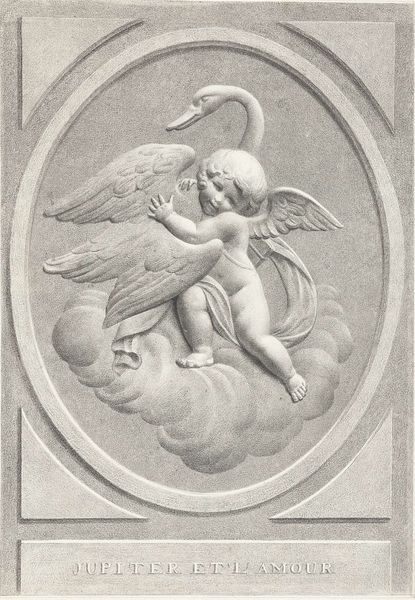
sculpture, marble
#
portrait
#
sculpture
#
figuration
#
11_renaissance
#
sculpture
#
marble
#
statue
Dimensions: 30 cm (height) x 52 cm (width) x 12.7 cm (depth) (Netto)
Curator: The "Cherub with Two Pairs of Wings," a marble sculpture dated between 1450 and 1525, now residing here at the SMK, strikes me as possessing a somber kind of grace. Editor: Yes, striking! The child's expression feels remarkably knowing for an angelic figure. It's more watchful than innocent, perhaps even slightly burdened. Curator: It's interesting you say burdened. During the Renaissance, cherubs shifted from powerful spiritual beings to these representations of innocence. But if you consider it from a cultural history angle, these images functioned within religious and often political frameworks. Commissions for churches and aristocratic homes shaped what qualities they should convey. Editor: Absolutely. But why the four wings? Double the typical amount for cherubic representations? Does that signal a hierarchy, some elevated status within the angelic realm, or simply artistic license? Curator: It possibly hints at a confluence of iconographic traditions, echoing descriptions from texts discussing the celestial hierarchies. The number of wings, alongside other symbols like the positioning of hands, directs the viewer toward specific interpretations. Think of how the color or fabric woven into royalty’s garb acted as social signals in paintings. These wings perhaps served similarly. Editor: So it becomes less about ethereal beauty and more about carefully constructed messaging intended for an audience steeped in those traditions. That knowledge really does change my reading. The cultural weight behind even these seemingly simple forms...it’s potent. Curator: Precisely! We, as modern viewers, need to remember that cherubic symbolism functioned with purpose. We often see their face on greetings or in art devoid of deeper religious undertones, without pausing to contemplate the significance once given. It reminds me of how secularized and reinterpreted mythological figures became during various phases of socio-political development. Editor: I'm seeing this familiar image through a new lens, appreciating that it invites deeper examination than the sentimental cherub we recognize on modern day greeting cards. Curator: Indeed, it prompts reflection on shifting perceptions, while underscoring cultural and historical narratives subtly embedded in familiar visual forms. Editor: And maybe challenges the easy comfort we usually associate with it.
Comments
No comments
Be the first to comment and join the conversation on the ultimate creative platform.
